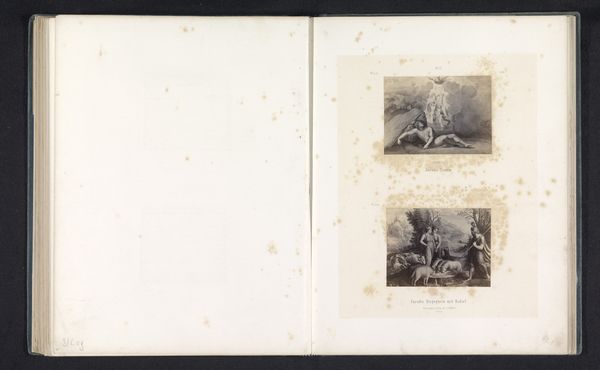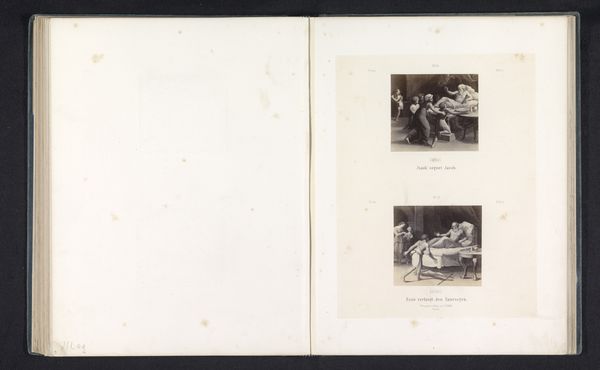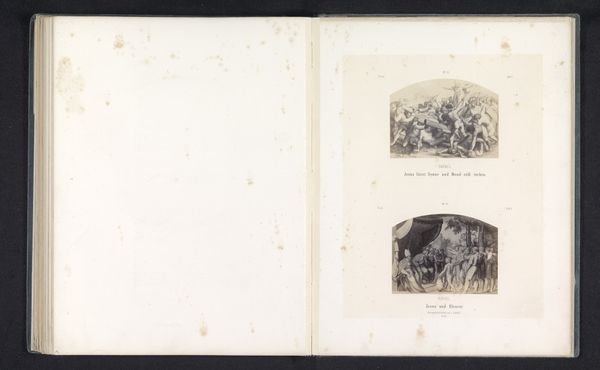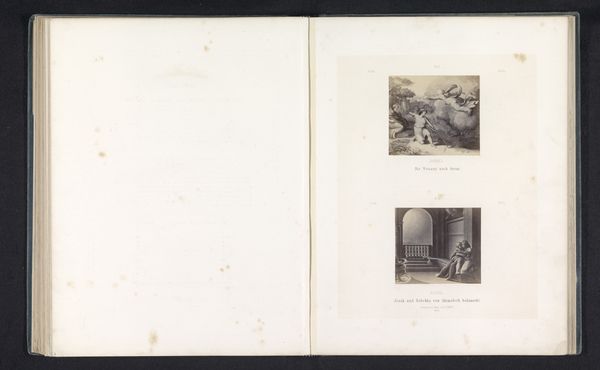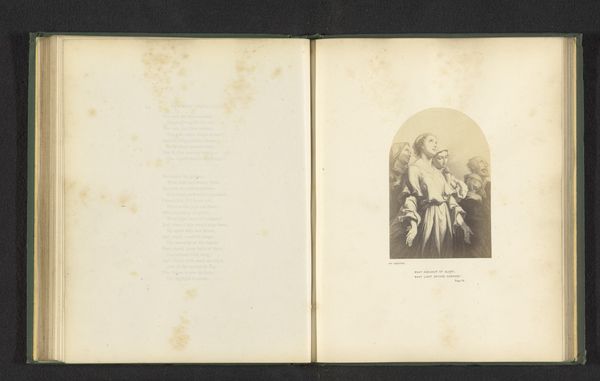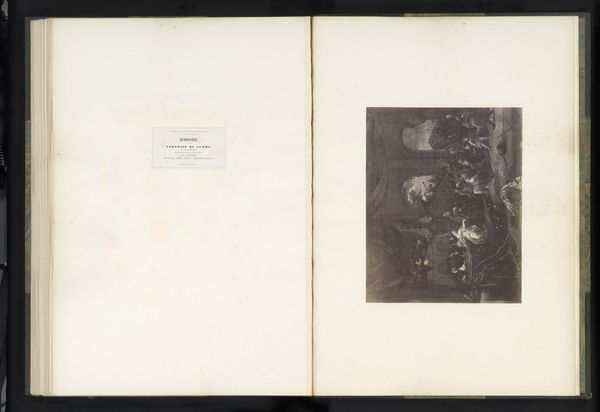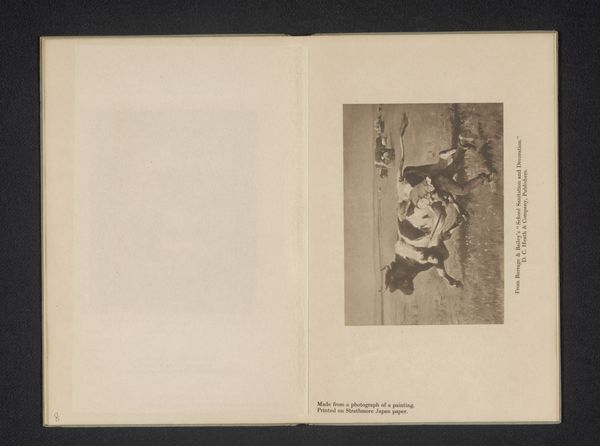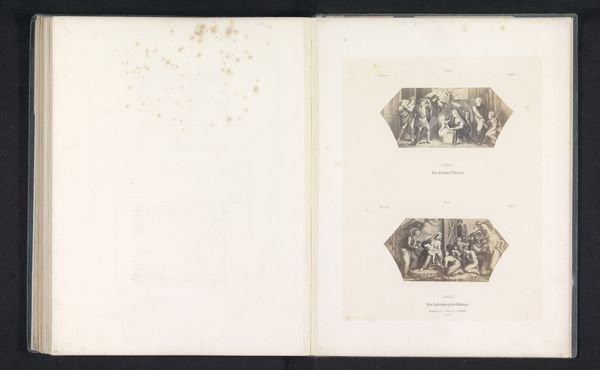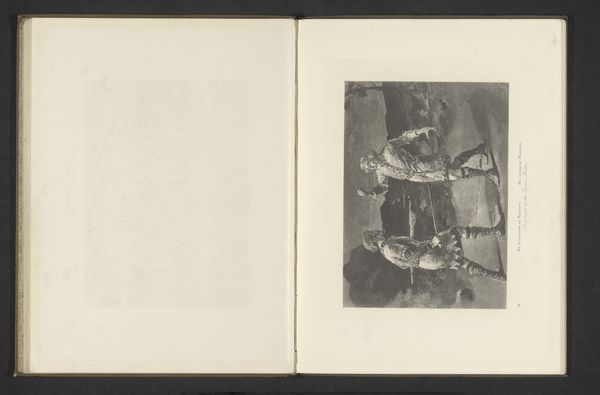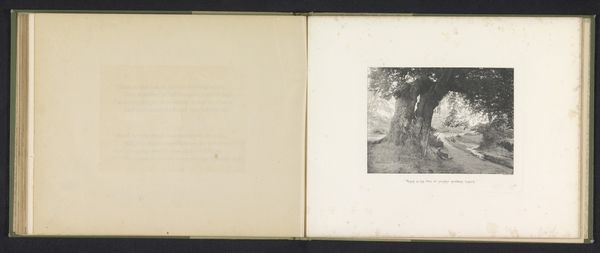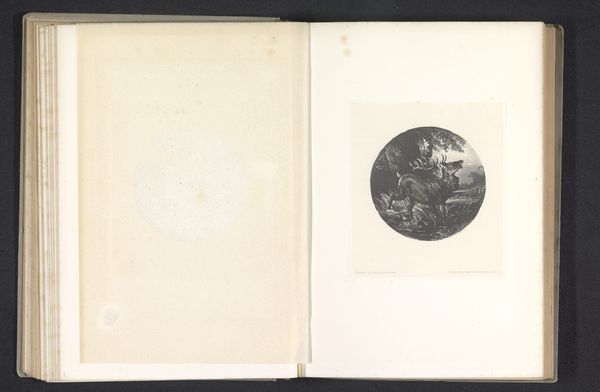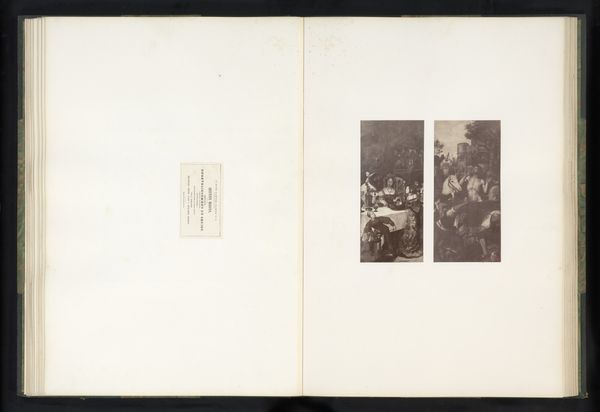
Fotoreproducties van prenten naar fresco's met voorstellingen van de verdrijving uit het paradijs van Adam en Eva en het verloren paradijs door Rafaël voor de loggia's in het Vaticaan before 1861
0:00
0:00
Dimensions: height 325 mm, width 250 mm
Copyright: Rijks Museum: Open Domain
Curator: Before us, we have “Fotoreproducties van prenten naar fresco’s met voorstellingen van de verdrijving uit het paradijs van Adam en Eva en het verloren paradijs door Rafaël voor de loggia’s in het Vaticaan,” a pre-1861 print by Gustav Schauer. It depicts scenes referencing Raphael's Vatican Loggia frescoes. What's your initial take? Editor: Bleak. Even within the confines of this printed reproduction, there is a discernible emphasis on chiaroscuro. The contrast feels heavy, almost melodramatic. Curator: Right, this reproduction underscores the cultural impact of Raphael's interpretation of the Genesis narrative. Consider how these images circulated – prints making high Renaissance art accessible to a wider audience. It raises interesting questions about art democratization. Editor: The composition also evokes a certain sense of guilt and loss, with the figures positioned in poses of anguish and despair, almost expelled out of the artwork’s boundary. The angel’s positioning directs your eye to them, but then forces you back into a loop of their sorrowful existence. Curator: And it's worth remembering the historical context of the Vatican Loggia itself. As a space of papal power and display, Raphael's frescoes were laden with religious and political significance, echoed and reiterated by this print. Editor: From a structuralist perspective, one might analyze the dichotomy between light and shadow as representative of the shift from divine grace to human fallibility. Semiotically, consider the significance of the forbidden fruit – an act of disobedience and how these images, in their dissemination, reinforce or challenge that established religious doctrine. Curator: Absolutely. The mass production of prints played a role in shaping perceptions, disseminating not just aesthetic preferences but also religious ideologies. Editor: Indeed. In scrutinizing its compositional elements and symbolism, this artwork urges the viewer to grapple with timeless questions about human nature, free will, and divine judgment. Curator: It is compelling to consider how printed works contribute to art's continuing ability to influence socio-political perspectives as it transforms art’s historical role through accessibility. Editor: My engagement with this reproduction underscores that an image, regardless of its form, provides access to multiple stories if the viewer simply makes an effort to perceive them.
Comments
No comments
Be the first to comment and join the conversation on the ultimate creative platform.
